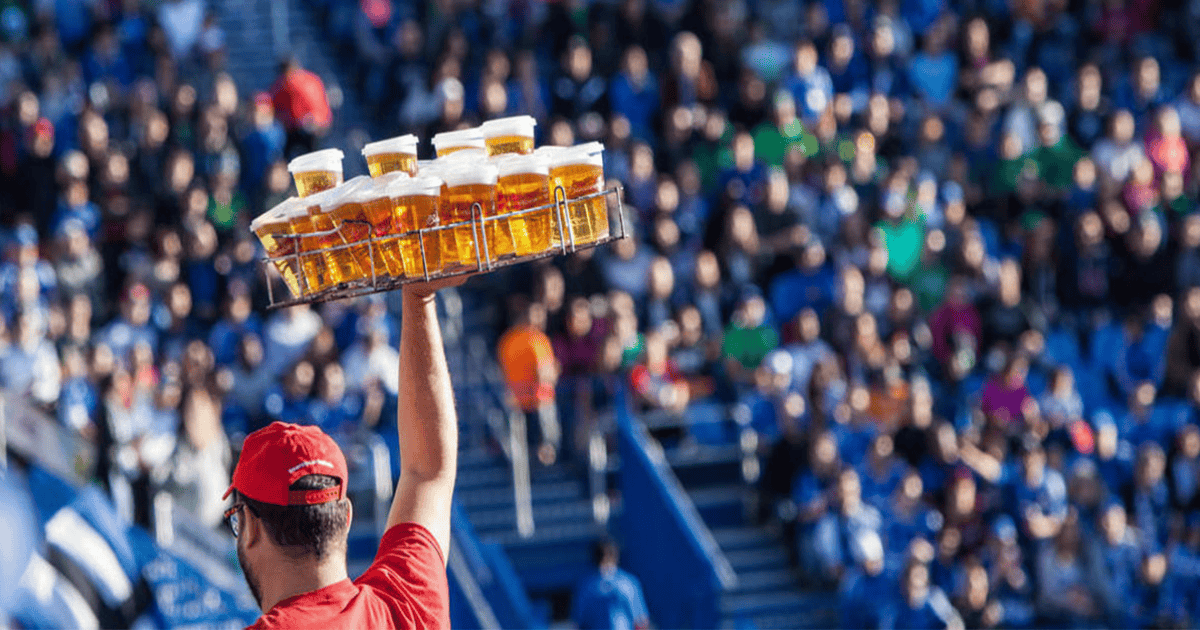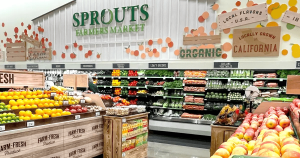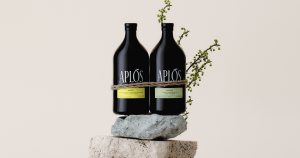For a growing share of eventgoers, there appears to be a recurring issue: the increasing number of non-alc options offered at bars, restaurants, and bottle shops alike is not reflected on the menus of their favorite venues.
Across stadiums, many guests are finding themselves with just two choices: water or soda. And while that might have sufficed a decade ago, it reads as woefully out of step with the drinking culture shift unfolding in real time.
The absence of non-alcoholic options at venues reveals a broader industry blind spot—one that carries social, operational, and financial consequences.
A System Built to Pour (Alcohol)
The most common reason fans can’t find premium non-alcoholic options at games? They were never invited to the party.
For years, alcohol conglomerates have locked in exclusive “pouring rights” contracts that grant them sole access to beverage taps, coolers, and signage. These deals effectively shut out small or independent brands, even those with no alcohol content.
Concession operators, chasing margin, tend to prioritize products with the highest and most immediate returns. Beer, for instance, can deliver up to 80% gross margins on draft and canned formats. Until recently, mocktails and premium non-alc beer carried no proven volume. And without volume, there was little incentive to add complexity to the menu.
This created a loop: limited selection discouraged demand, and lack of visible demand justified limited selection.
Venues Haven’t Moved On, But Fans Have
Consumer behavior, however, has changed dramatically, especially among younger adults. Gallup reports that the share of American adults aged 18–34 who view moderate drinking as unhealthy has more than doubled since 2018.
The idea that fans come to drink may persist in legacy thinking, but it increasingly misrepresents who’s showing up and what they want from the experience. Pregnant attendees, designated drivers, religious abstainers, and those who choose not to drink that evening—for any reason—all deserve more than a Sprite.
At Wembley Stadium’s Capital Summertime Ball this year, British influencer Milly Gooch posted a now-viral critique:
“There wasn’t a non-alc option (outside of Sprite and Pepsi Max) in sight! I thought this was 2025? … From a financial perspective, Wembley made about £6 out of me. The cost of two waters. I would have gladly spent more if there was a decent alcohol-free beer or cocktail.”
Fans want to feel part of the event. They want to celebrate, to toast, to participate. And they’re willing to pay for that privilege.
The Hidden Cost of the Status Quo
In prioritizing alcohol sales over everything else, venues leave more than goodwill on the table.
Data from early adopters shows clear upside. At Emirates Stadium, sales of Athletic Brewing’s Run Wild IPA rose 220% during its debut season, helping extend a multi-year partnership. Acrisure Arena’s $14 Lyre’s-based mocktails sold more than 2,000 units in three months, with beverage sales increasing overall. Mocktails priced at cocktail levels often carry lower ingredient costs and higher margins, particularly when paired with upsells like souvenir cups or themed garnishes.
Beyond direct sales, the marketing value is considerable. Corona Cero became the first non-alcoholic beer to sponsor the Olympic rings in Paris 2024, leveraging its status to sidestep alcohol advertising restrictions and reach billions of viewers.
And then, of course, there’s safety.
The Role of Alcohol in Venue Disruption
Alcohol remains a primary factor in violence and disorder at sports venues. Nearly 40% of NFL fans report witnessing crime near stadiums, most often public intoxication and physical altercations. Crowd density, emotional highs, and team rivalries already create volatile environments. Intoxication only compounds the risk.
Families and women often cite safety as a concern at venues where alcohol dominates both the menu and the atmosphere. Studies even show that post-game domestic violence can spike by as much as 50% in the hours after a major sporting event, especially when heavy drinking is involved.
Non-alc options won’t eliminate conflict, but they represent a powerful harm-reduction tool. They give attendees ways to moderate without social penalty. They create a more balanced service environment for staff. And they reduce the pressure to drink simply to participate.
What It Will Take to Catch Up
Venues need not reinvent the wheel to keep pace with demand. Several steps can begin to close the gap:
- Update pouring-rights contracts to make space for non-alc options
- Build tiered non-alc portfolios that include premium non-alc spirits and beers
- Train concession staff on upselling from water and soda
- Market the change with digital menus and signage, avoiding the “I didn’t know you had that” problem seen at some venues
The demand is no longer hypothetical. Fans have made their preferences known. And forward-thinking venues have proven that when high-quality non-alc options are available, people buy them.
The gap between what people want to drink and what venues serve continues to grow. But the window for early-mover advantage remains open… for now.






